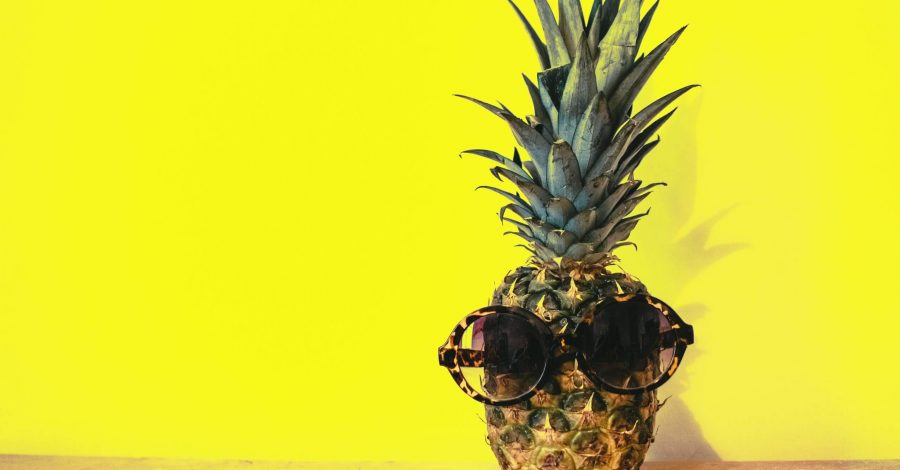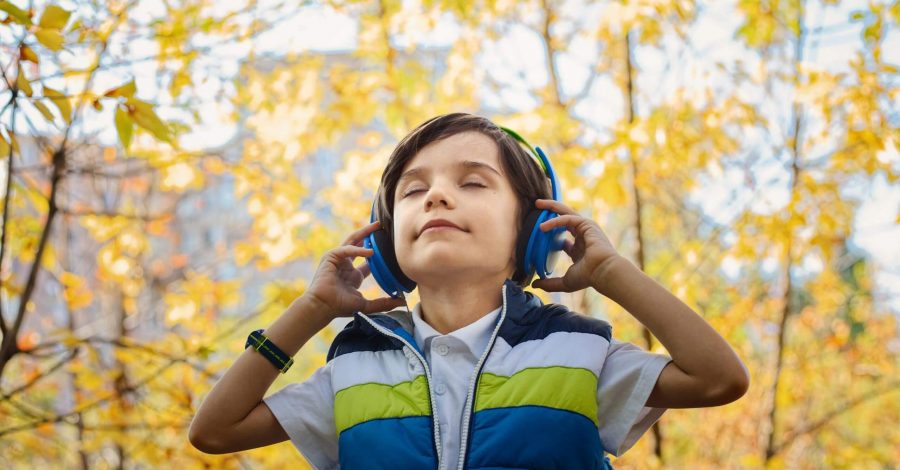The moment you start thinking your product will live forever is also the moment you start to fade into oblivion. Not even the richest, most powerful and globally influential newspapers have been able to breeze through the changes in media consumption that followed the digitalization of the print business. Not without scars they may never get rid off, anyway. Many have died in the process. The survivors are still struggling.
Radio has held up much better than print media. So far. But it is not so much a result of innovative thinking and brilliant adaptation skills. The reason radio has not lost market share and revenue to the same degree as newspapers is much less flattering than that. So if the radio industry wants to stay afloat, it needs to learn from the arrogant mistakes made by the Lords of the Print. Because radio is next to fall. Next as in ”now”.
Failed attempts to adapt
At first the print publishers underestimated the size of the new wave they were facing with the internet growing in size and usability. And having realized just how fast their readers were changing habits, they then overestimated their own role in the lives of their readers. They thought that just making their articles available in a digital format would make the ugly future go away. Keep the money flowing.
It didn’t. It just got worse because they held on to expensive production chains. Now even more expensive because everything also had to be digitalized.
Once it became clear that advertisers were moving away to join the users on new platforms, publishers were already too far behind. They had lost too much money and, most importantly, lost too much time to catch up in a jiffy.

Radio is next
It is not difficult to figure out why print media was first to struggle with the online transformation. Print doesn’t require a lot of bandwith and it does not consume a lot of data usage to view text or images online, even on a mobile device.
Listening to an audio stream online on broad band is not a big deal either, but 3G coverage has been too scattered and flatline data plans have been too expensive for a streamed audio signal to be really attractive on mobile platforms.
That explains the explosive growth in online music purchases for offline usage on iTunes or Spotify. It also explains why radio still plays a huge part in the
lives of listeners. As it is, technology – or lack of – has been kind to radio. But make no mistake; with unlimited dataplans beginning to be available to most users and decent mobile signal coverage accesible almost everywhere, the same technology that spared us might eventually kill radio. We need to link up with consumers and provide the product they want in order to stay alive.
You can try to brainstorm your way forward and figure out what their needs are, but learning from the wrongdoings of the print industry, that does not seem to be a good path forward. Consumer habits change rapidly in times of leaping technological advances, so good luck trying to keep up in the brainstorm.
You can try to ask them, but honestly: Twitter probably wouldn’t have existed if it had been proof testedin a panel. Neither would Buzzfeed or Snapchat.
The trick is to fill a void consumers are hardly aware of. To play a larger or smaller part in the day and life of the user that makes it easier, funnier, less lonely or more convenient to be around. A part that is not forced and awkward, but natural and desireable to them.
Stop the guessing and be careful with questions
To find that valuable void consumers can’t evenidentify themselves, we think it is time to stop guessing what they want, time to be careful what we ask them for and time to instead start analyzing the movements of the stream users who are already there. Radio needs to start observing these listeners and follow their directions while preparing for the new age of the industry. Which could be a really good age, perhaps even a golden age, if radio is willing and able to adapt.
We often hear protests like ”sure, but if I change myradio station to fit the stream users, I will lose my on-air listeners”. Which could not be further from the truth. As a matter of fact, you could grow your FM-ratings while catering directy to your online listeners.

Danish talk radio network 24syv conducted a survey showing just how big an overlap there is between online/podcast listeners and traditional FM/DAB listeners.
The chart on the left speaks for itself with just 8% of online based listeners exclusively using the internet as their listening platform. The remaining 92% shop around between sources, choosing the one that is most convenient to them at the time they want to listen.
Stream listeners are core listeners

A further survey from the German company TNS Infratest (right) underlines the fact that stream listeners are indeed core listeners – and it indicates how good a chance radio has to remain top of the pile in the future.
A staggering 81% of German online listeners said they prefer to listen to an audio stream that is also bradcast on the FM band when they go online to enjoy radio.
In terms of demographics there is nothing to be afraid of either. It’s not just geeky teens with zits who listen to online streams anymore. ”The Infinite Dial 2015” from Edison Research estimates that 53% of all Americans – or 143 million people (!!) – listen to online radio at least once per month.
And on the other side of the Atlantic, the German TNS survey shows that half of the stream listeners are more than 30 years old.
It is no small matter either, the stream listening. In 2014 the number of sessions grew more than 25% in just 6 months in the official German AG MA ratings. A trend that is confirmed and even surpassed in other European markets, directly correlated with local quality of the mobile coverage and local pricing on flatline data plans.
Habits will normalize somewhat
As technology becomes better, cheaper and much easier to operate the volume of the stream listening will continue to grow rapidly and demographics on stream listeners will start to look even more like the ones we are used to from balanced ratings surveys. Which makes it even more worthwhile to observe them closely. And not only for the fact that they are listening to online streams – but for the fact that they are the same people who listen on other platforms, be it FM (while it is still alive), DAB or some new platform we haven’t even thought of yet.
They are no different than listeners who have not yet embraced digital platforms. So in a sense they are the biggest listener panel you will ever work with. If you only accept this fact: platform is irrelevant. It is what you put on the platform that counts.
Study the fingerprints
The beauty of the stream listeners is that they leave a digital fingerprint every time they tune in. This makes it easy to track their behaviour and learn from what they do. Both in terms of finding out which types of content and music they like, and in terms of understanding the rhythm of their day and how to fit in with it.

Above is a graph from the RadioAnalyzer software suite showing a typical 24 hour cycle of an average simulcast radio stream. Recognizable for the peak in the morning and the steady volume of listening over the work day. But unlike a classic FM-listener cycle there is no major listening peak in the drive period.
Instead there is an increase in listening around dinner time and a surprisingly large volume of listening during the early evening. Or perhaps it’s not that sur-prising, when you think about it. More and more people are liberating themselves from the tyranny of the time, watching their favourite TV shows when they want to, not as they are broadcast. And using social media when the kids have been put to bed, perhaps with a nice audio stream running in the background, not rushing to get to the sofa to blob in front of the telly.
This pattern will even out somewhat as the number of stream listeners grows. But if you recognize it as a chance to build a useful radio product for consumption along with social media in the evening, we think it may be possible to create a third primetime for radio. A primetime for younger listeners; not exactly a demographic that radio has a good grip
on these days.
Stream listeners tend to be a little more patient than FM-listeners in the sense that they will wait longer before switching the channel if something they don’t like is playing.
That will change as it gets easier to navigate online streams without having to press too many buttons on the computer, smartphone or dashboard.
Build better – not fancier – apps
What will not change, however, is the fact that radio must take the needs and wants of the stream listeners seriously if it wants their attention.
Radio needs to build good players and apps that can handle a slight drop in signal strength without stop- ping the audio from playing. To make apps that consume as little battery as possible and that can resume playing the live signal after a phone call. Apps and players that work seen from the users perspective and that are brilliant at doing the function the user most likely downloaded it to do: play audio.
That also means the radio stations need to stop making funky functions that are of no use to the listeners, or at best considered a novelty that quickly wears off. We have seen heat maps of the location of other listeners, live video feeds overlooking the Plaza the radio stations reside in with a *discrete* sponsor sign in the background. And we have seen persistently irritating pop-ups targeting the current location of the listener.
Some of those functions may be able to generate modest revenue, but at a price. They are more likely to turn away users and make them shop somewhere else. If you are lucky they will turn to a third party app to find your audio signal. But if you are not lucky, they will drop you all together and find something else to listen to.
We are happy to see many European radio stations pursuing a solution where they gather in stream communities. These contain most, if not all, radio stations in a given market on one website and in one app. The non existing willingness to create a ”kiosk” of that kind is one of the most unbelievable mistakes the newspaper industry committed; a mistake that should not be repeated by radio.
Go solo if you dare
Another way to go is to believe in your own product to such an extent that you go solo and make users download an app that can only play your signal(s). If you do that you had better make sure your brand is strong enough to not drown in the flood of other offerings users can choose from. And you had better make sure your app or web player is the absolute best one around. Otherwise you are likely to become very lonely in your own private universe.
There is nothing sadder than to hear someone say ”do you know who I used to be”. So stop guessing and start observing if you want to avoid being the one to say those words in a few years.
When? Well – yesterday. As in ”now”.


CEO & CO-FOUNDER OF RADIOANALYZER
Alumni of DJH (Danish School of Journalism) and eternally devoted to improve mass communication. Has excelled as Journalist, Columnist, Commentator, DJ, News Director, Sports Editor, Sub Chief Editor, Innovation Director and Radio Manager. Started in radio at age 14 and isn’t planning to quit anytime soon.



